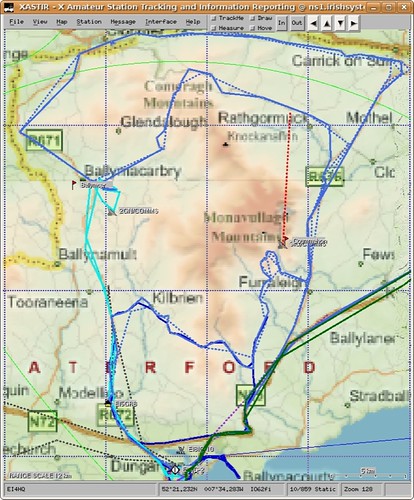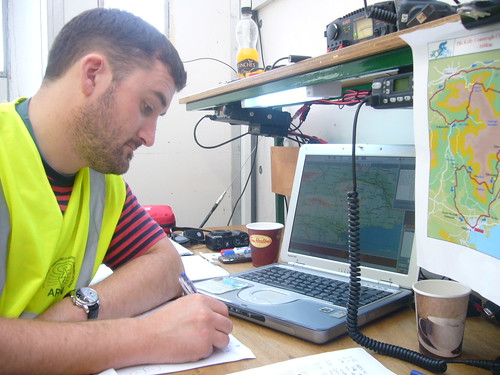So EI4HQ and I were discussing “toys” and presents in general, and he inquired about the TH-D72 and battery life. I purchased mine in November 2010 (G0HWW twisted my arm) and have used it for various things from AREN events, listening to aircraft, DTN Experiments (PDF), silly IP over AX.25 tunnels, the usual.
Anyway, I said to EI4HQ that I though it was about 8 hours, but I would check.
The radio has a setting to allow it to transmit the position of the radio, automatically at fixed intervals (beacon interval). So, I did three experiments. I left the radio in the car for the day on all three occasions. Setting the beacon interval to 5 minutes the first day, 10 minutes the second, 20 minutes the third while the second side (transceiver) of the radio was monitoring the local voice repeater(EI7WDR). This was done just to see what the difference was in battery life, and I (and WE7U) was making the assumption that with the longer intervals, that the battery life would be better.
Day 1, first beacon recorded on aprs.fi at 08:50, last at 18:06, total operational time of 9h 16 minutes. Day 2, first beacon recorded at 08:21, last at 17:41, total operational time of 9h 20 minutes. Day 3, first beacon recorded at 08:18, last at 17:18, total operational time of 9h.
Now, today I had to drop down to WIT, so the onboard GPS had to come out of its power save mode for that short journey, which may account for the reduced battery life. Also there could have been more activity on the repeater, actually there was, I had a brief conversation for a few minutes with EI2HI in Cork on the way into work this morning.
However, the results are pretty clear I think (and I would love to see someone else’s results to compare), that the once every few minutes position beacon is not the biggest load on the battery with everything else running.
So what is the battery life? Without more experimentation, i would guess about 6 hours if I was out walking with it. That, I think, will have to be the next experiment.




